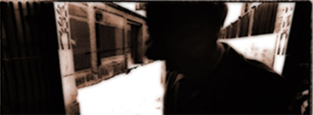The Language of Art
The Language of Art
The dream of an artistic universe that exists independently of linguistic representation is brought back to life through the latest exhibitions at Standard (Oslo); where one exhibition text completely misses the mark with its mumbo jumbo Latin, and another borrows a pragmatic concept from the business world, while the critic backs into a corner of clichés.
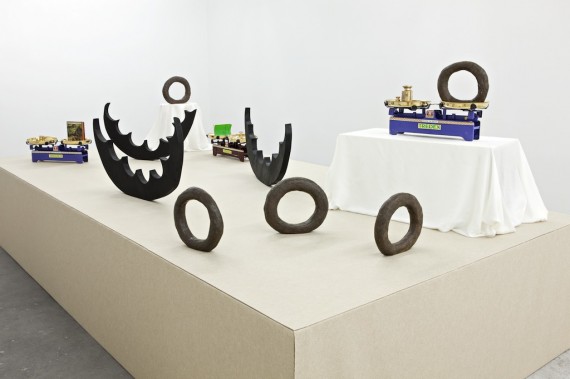
In the best of creative and challenging worlds, all art should form an existentially communicative situation, where it expresses a language beyond word, its pronunciation far removed from the short-lived and routine existence of spoken language. In other words: art that simply adheres to its inner logic, and achieves confirmation through its unique form and capacity. In that best of worlds, artists would not see themselves as craftsmen, creators desperate for acknowledgement, but rather each as a medium, a herald of the community, bringing messages from the spiritual, abstract, and unknown to the physical, prosaic, and overlooked. In that world, we would regard art as a vital organism, which defends the integrity of both a piece and the human behind it, where content and form in several wayscannot possibly be reduced into words.
Yet, I must mention that I am not categorically rejecting all notions of absorption and extended knowledge. And hopefully, I will also – in my capacity as a critical and reflecting observer – do my part, by participating in serious discourse, no matter whether I rub others the right or wrong way. My main objection is to the almost epidemically increasing proportions of exhibition texts that artists and curators attach to the tails of their work today, particularly when all it comes to are confusing and vague results that don’t correspond to the pretentious words in these texts. How many times haven’t we all read an exhibition text over and over just to see if we were really at the right exhibition, or at the right address yet left with the feeling that we were standing holding the wrong catalogue?
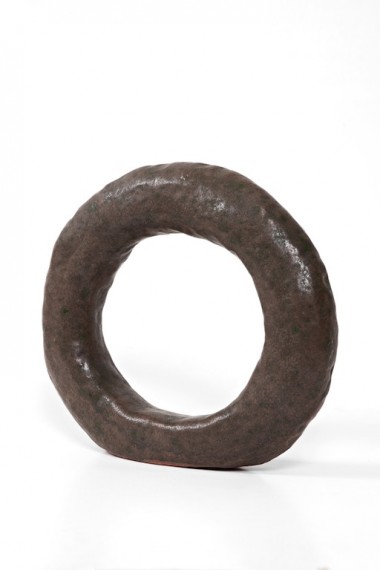
Is it an onion ring and a symbol of eternity?
Among the work included in Michaela Meise’s (b. 1976) solo exhibition Recent Works are three clumsily shaped ceramic rings, approximately 30 cm in diameter. Part of the exhibition text informs the visitor: ‘Taking the shapes of rings, the sculptures can both be seen as framing nothing or being something, which is depending upon whether one regards the circling happening around an empty centre or the circle being the object itself [sic].’ Regardless of the visitor’s actual perception of the piece, one cannot possibly but dismiss this statement as nothing other than pseudo-philosophical nonsense. It not only sheds meagre light on the actual rings, but also shows both Meise and the curator responsible as vague and fumbling art tourists. As for me, yours truly, this completely useless morsel came to my attention even before of my visit. The musty feeling got even worse as I circled the actual rings, which peered at me shamefully, as if excusing themselves for their mere existence.
The short, technical explanations about material and size written on labels are a source of irritation to some people, but these are pale in comparison to the philosophical statements whose content falls apart at the slightest scrutiny. A suggestive explanation of the contents of a piece can, by all means, be interesting as a separate entity, but in most cases it’s irrelevant to the piece. So, what to do? How to act, and react? Partly, since we maintain an interest for the bigger picture, profound analysis may lead to the desired clarity. But mainly, analysis is necessary because we share a need to understand and defend art’s innermost character, because we all have a responsibility towards the reactionary parts of society, who will, unfortunately, have their arguments strengthened by such vacuous statements as the one quoted above, and will then probably stick to their fixed opinion on the irrelevance of any other attempts at culture. And this is no minor issue, as most of us are vocal believers in the inherent value of art, who probably share an uneasiness about reductionist forces in society, who lie in wait, implacable and relentless, only to rise out of some dark deep hole of the future.
Language as a possible consequential damage in art
The title of the Standard’s other newly opened exhibition, Consequential Damage, is originally a legal concept: ‘Damage or injury that does not directly and immediately result from a wrongful act, but instead indirectly and/or after elapse of some time.’ […] ‘Actionable damage, but not following as an immediate result of an act.’ Why the curators have chosen to borrow a concept from the realm of law for this group exhibition is somewhat unclear. Initially, this overarching and unifying title takes a natural step forward through an obscurity that attracts and inspires, giving you something persistent to take with you, something that takes up residence in your mind. All in the hope that this something will develop in some unforeseen and interesting direction, as a timely thought, a new insight – a metalevel of the first order.
This was, unfortunately, a misconception. The exhibition text stopped at that, it never left the starting block. The initial feeling that it was undefined and full of potential ended up in being indistinct and full of pretention. The result is an exhibition that never comes close to what it claims, and yet another curator tumbles from their high horse. If I were to treat this disappointing effort with kid gloves, I would praise the challenging mental bridge-building the exhibition encourages, it becomes a point of potential at the centre of a complex and changing thought. And additionally, because the curators take pains to display a certain point of view, they open up a severe setting by showing sensitivity for widely differing impulses from different areas and their inevitable, universal intersections.
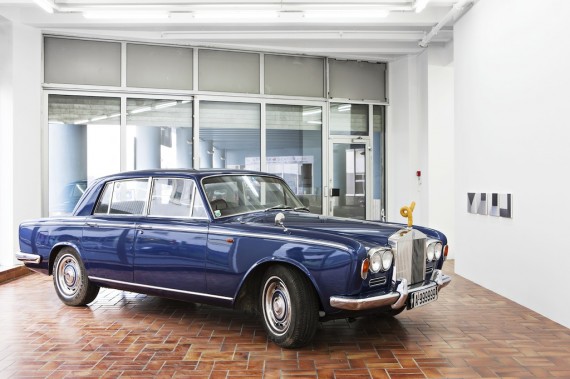
If I, on the other hand, were to adopt a more critical attitude, I would have several arguments at hand, the strongest of which is obviously the fact that the exhibition fails to live up to its theme, which its creators doubtfully, or even falsely, claim to investigate and display. If a group exhibition consists of collected content that has been placed in a given arrangement, then it would be natural to find common denominators, through ideology, metaphors, historical junctions, contemporary trends and issues, and so forth – possibly even, by also looking to concepts from outside the artistic sphere. But if the displayed work doesn’t correspond to the ambitious overall motif, then presumably good intentions run the risk of resulting in yet another instance of forced comparisons. So ultimately, instead of displaying several relevant intersections of reality, the compilation of works shown here results in a reduction of reality where the curators, through a verbal shot from the hip, mutilate both art and man.
Pop and the cliché
So, what does this exhibition really consist of? Well, some of the artists involved work in the aftermath of pop art, a few even adjacent to kitsch. Their contributed work lacks craftsmanship, beauty, and gravity, and it is obvious that my hereditary customs and personally composed aesthetic criteria are no valid basis on which to judge these pieces. What is valid, then? The pieces are neither markedly shoddy nor provoking; rather, they are characterised by distance and bloodlessness. Are these the “standard escape routes” – the elusive and diffuse subtitle of this group exhibition – to which the exhibition text refers?
Sigmar Polke’s descending diagram (Unerwünschte Geschenke), Franz West’s plastic penis extended Rolls-Royce (Untitled), Ann Cathrin November Høibo’s toilet paper holder (The Kiss) and Chadwick Rantanen’s tennis ball poles (Telescopic Pole) became cliché commercial pictures by using assisted ready-mades and pictures of pictures; respectively linked to the romance, desire, and ephemeral nature of everyday life. It is art that superficially addresses ironic playfulness in lack of any obviously profound meaning. It seizes on the trivial and banal, plays safely with its American origins, and continues straight into a wall.
‘What is the deal with stereotypes?’ I ask myself, slipping and sliding around this phenomenological cosmos where everything is plastic and full of irony. Why am I so negative and prejudiced toward, afraid of, the trivial? And is my criticism a cliché in itself? In accordance with the exhibition texts written by artists and curators, I sometimes find myself leaning on tired notions like conceptual andrelational; I carry around words like voice, body, space, sonority, and structure, worn smooth from constant use. These expressions are truly useful and full of nuances, but because they have been transformed into cultural currency – repeated, overused, and re-evaluated – they have turned into clichés in some aspects. Different concepts can be used to clarify and provide distinction, but nowadays one should really consider every word carefully, deciding whether to use it or to put it in linguistic quarantine.
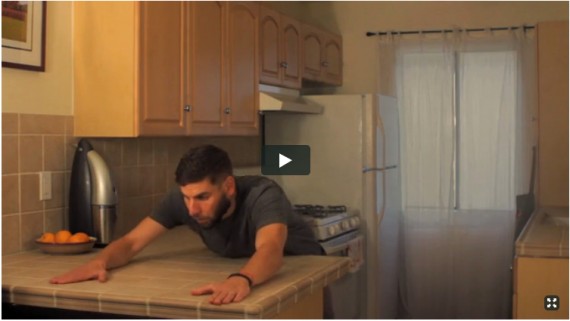
At the same time, few of us are unaware of the significance of replacing words. We are all creative and thoughtful human beings, who can clearly see the sophisticated causality involved in abandoning used up words and finding new ones instead. And, in fact, no part of society is spared from clichés, so why should the cultural sphere be an exception? Isn’t ‘our’ sector in many way even more adolescent with its transitory epochs and short-lived ‘ism’s? Routines are also something that we all have to cope with in a spoken and written, expressive and explaining civilization in the fast lane. But the idea of improvising and imitating is not sinful. It can develop into a form of communication that we can make use of sometimes, and a certain amount of repetition is not altogether a bad thing. If anything, it can place a truth or two on our mental maps.
Metal and the spastic
Two Americans of nearly the same age, Oscar Tuazon (b. 1975) and Aaron Garber-Maikovska (b. 1976), both made an impression on me. Despite two very different bodies of work, I can relate to both in some levels. Tuazon covers the showroom in a greasy layer of oil and carbon; his contribution smells of diesel and unpleasantness, and is a welcome interruption among the other artists’ glaring, superficial fare. This, despite the fact that we’re dealing with three of his smaller and less challenging pieces in this exhibition. He’s probably most renowned for his overgrown steel- and wooden sculptures, which he most often builds at the site in question, working out of and taking into account the construction and architecture of the host gallery. The result is that these structures, through their bulky format, compete with the actual walls and ceiling of the room, and look as though they are too big and about to punch their way through the gallery’s walls. It’s a brutal, unpleasant, and destructive art, which, through its indications of an eventual surrounding breakdown, questions different kinds of limits, both for art and mankind.
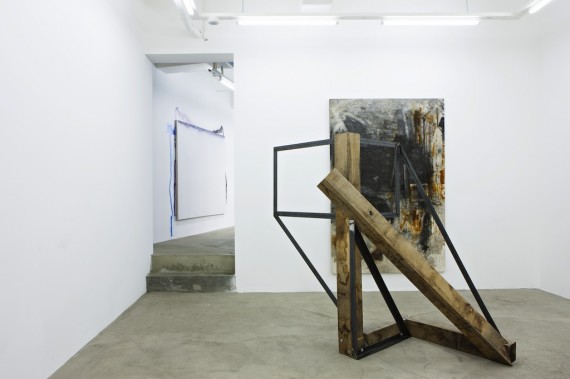
Compared to the weight and depth of Tuazon, Aaron Garber-Maikovska’s naïve paintings and humorous video-documented performance pieces seem the antithesis of his fellow-countryman’s work. The paintings are figurative and simple, approaching childishly drawn comics, which initially don’t attract any attention to speak of. But after watching his video piece, new light is shed on the seemingly clumsily drawn stick figures. Consequently, it fills a complementary role. During the six minute loop, the artist himself moves around a clinically clean kitchen, performing a very musical and rhythmical dance, or should I perhaps say solo concert based on humming, chanting, slapping, and so on. With its spastic, repetitive movements and sounds, it reminds one of, if not actual autism, at least very neurotic personal traits. Since he is playing off to Wagner’s idea of the Gesamtkunstwerk [tr.Together-artwork], the music, rhythm, and Garber-Maikovska’s own spastic energy fittingly comes across in his paintings as well. It is as if his dance is a never-ending soundtrack to his abruptly painted lines.
So, where do we stand? Where did this line of arguments take us? No matter what your answer is, I personally think it impossible not to conclude this text by stressing the significance of links between all our lives – the links between artists’ lives, between the originator and the receiver, between me and you, which approach a level of synthesis through art. Art should, in the best of worlds, be a proposal and an offer for us to use our eyes in a new and different way; where the links between sight and sense, word and action function like keys to new rooms of experience — spaces where our often loosely driven and poorly steered impulses are brought together and awakened to a wider consciousness.
MICHAELA MEISE
Recent Works
5 April – 11 May 2013
JONATHAN BINET, WALKER EVANS, AARON GARBER-MAIKOVSKA, GUYTON\WALKER, ALEX HUBBARD, ANN CATHRIN NOVEMBER HØIBO, ADRIANA LARA, KLARA LIDÉN, ANDERS NORDBY, SIGMAR POLKE, CHADWICK RANTANEN, NICK RELPH, HANNAH RYGGEN, TORBJØRN RØDLAND, OSCAR TUAZON, FRANZ WEST
Standard escape routes
5 April – 11 May 2013
Standard (Oslo)

